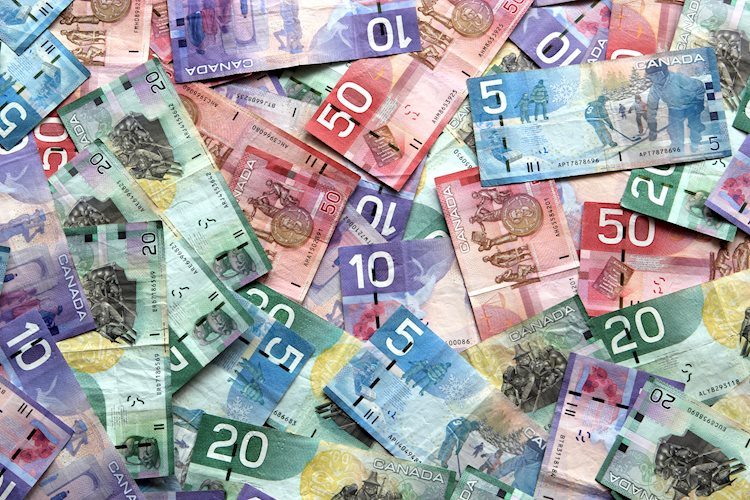
In the latter part of this week, major currency pairs are maintaining their fluctuation within familiar ranges. Prior to the Easter holiday commencing on Friday, the US economic calendar includes significant events such as the weekly Jobless Claims, February Pending Home Sales, and the University of Michigan’s Consumer Sentiment Index for March. Moreover, the US Bureau of Economic Analysis is set to unveil the final revision to the fourth quarter Gross Domestic Product growth, followed by the release of the Personal Consumption Expenditures (PCE) Price Index data for February on Friday.
The US Dollar (USD) Index concluded Wednesday with minimal change, reflecting the challenge of gaining momentum against its counterparts amidst an improved risk sentiment. Early Thursday, the USD Index exhibits slight fluctuations below the 104.50 mark within a narrow range. Concurrently, the 10-year US Treasury bond yield remains steady above 4.2%, while US stock index futures show marginal declines.
USD Performance This Week
The table below illustrates the percentage variations of the US Dollar (USD) against major currencies this week. Notably, the USD demonstrated strength against the Swiss Franc.
| USD | EUR | GBP | CAD | AUD | JPY | NZD | CHF | |
|---|---|---|---|---|---|---|---|---|
| USD | -0.10% | -0.22% | -0.20% | -0.05% | 0.03% | 0.06% | 0.88% | |
| EUR | 0.12% | -0.13% | -0.10% | 0.08% | 0.15% | 0.21% | 0.99% | |
| GBP | 0.22% | 0.12% | 0.04% | 0.18% | 0.26% | 0.33% | 1.12% | |
| CAD | 0.19% | 0.09% | -0.02% | 0.16% | 0.24% | 0.30% | 1.08% | |
| AUD | 0.07% | -0.05% | -0.17% | -0.14% | 0.04% | 0.11% | 0.93% | |
| JPY | -0.03% | -0.12% | -0.15% | -0.22% | -0.06% | 0.07% | 0.86% | |
| NZD | -0.10% | -0.16% | -0.27% | -0.25% | -0.11% | -0.03% | 0.84% | |
| CHF | -0.90% | -1.00% | -1.13% | -1.10% | -0.93% | -0.90% | -0.80% |
The heatmap visually represents the percentage changes of major currencies against each other. The left column is used to select the base currency, while the top row is used to select the quote currency. For instance, selecting the Euro from the left column and tracing horizontally to the Japanese Yen provides the percentage change for EUR (base)/JPY (quote).
USD/JPY experienced a retreat after nearing a multi-decade high around 152.00 on Wednesday, subsequently stabilizing above 151.00. Japan’s Chief Cabinet Secretary, Yishimasa Hayashi, stated on Thursday that all options are on the table against excessive currency movements. Meanwhile, the Bank of Japan’s Summary of Opinions from the March monetary policy meeting indicated that the yield curve control and other substantial stimulus measures have fulfilled their objectives. Market participants are keenly observing Japan’s Industrial Production and Tokyo Consumer Price Index data in the Asian session on Friday.
Japanese Yen remains near multi-decade lows against USD, with uncertainties persisting. USD/CAD concluded Wednesday in negative territory for the third consecutive day, entering a consolidation phase below 1.3600 early Thursday. Later in the day, Statistics Canada will release the monthly GDP growth figures for January.
In Australia, Consumer Inflation Expectations for March declined to 4.3% from 4.5% in February, while Retail Sales recorded a 0.3% monthly growth in February. Following a neutral performance on Wednesday, AUD/USD faced slight downward pressure, retracting towards 0.6500 early Thursday.
Australian Dollar maintains stability amid unchanged US Dollar, awaiting US economic data. EUR/USD encounters challenges in gaining momentum during the latter part of the week but remains comfortably above 1.0800.
GBP/USD observed marginal gains on Wednesday but failed to sustain the upward momentum early Thursday. The pair is currently trading slightly lower below 1.2650.
After encountering resistance near \(2,200 and undergoing a significant downward correction earlier on Wednesday, **Gold** regained bullish momentum, closing above \)2,190. While XAU/USD remains relatively subdued early Friday, it remains within close proximity to the $2,200 level.
Gold Frequently Asked Questions
Throughout history, Gold has held significant importance as a store of value and medium of exchange. Beyond its ornamental value in jewelry, Gold is widely recognized as a safe-haven asset, making it an attractive investment during turbulent periods. Furthermore, because it is not tied to any particular nation or issuer, gold can be used as a protection against inflation and currencies that are losing value.
Central banks are prominent holders of Gold, using it to fortify their currencies during economic uncertainties. By diversifying their reserves and acquiring Gold, central banks enhance the perceived stability of their economies and currencies. In 2022, central banks globally added 1,136 tonnes of Gold valued at approximately $70 billion to their reserves, marking the highest annual purchase on record. Emerging economies like China, India, and Turkey are notably increasing their Gold reserves.
Gold exhibits an inverse relationship with the US Dollar and US Treasuries, both significant reserve and safe-haven assets. When the Dollar depreciates, Gold typically appreciates, offering investors and central banks a means to diversify assets during volatile periods. Moreover, Gold tends to move inversely to risk assets; a surge in the stock market often suppresses Gold prices, while downturns in riskier markets favor the precious metal.
Various factors influence Gold price movements, including geopolitical tensions and recession fears, which can rapidly escalate Gold prices due to its safe-haven status. As a non-yielding asset, Gold tends to rise with lower interest rates, while higher borrowing costs usually exert downward pressure on its price. Ultimately, Gold prices are heavily influenced by the behavior of the US Dollar (USD) since Gold is denominated in dollars (XAU/USD). A robust Dollar typically constrains Gold prices, whereas a weaker Dollar tends to drive Gold prices higher.
